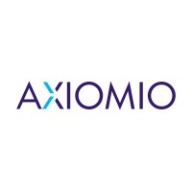

Find out in this report how the two Compliance Management solutions compare in terms of features, pricing, service and support, easy of deployment, and ROI.

| Company Size | Count |
|---|---|
| Small Business | 4 |
| Midsize Enterprise | 4 |
| Large Enterprise | 3 |
Lacework FortiCNAPP provides robust cloud security, combining vulnerability management and multi-cloud insight with user-friendly controls, machine learning detection, and compliance support.
Lacework FortiCNAPP specializes in cloud security by merging machine learning anomaly detection with agent-based vulnerability management to offer detailed alerts and compliance reports. Its comprehensive approach allows continuous monitoring across AWS and Kubernetes, providing insights from an attacker's perspective. The platform offers automation and seamless Slack integration, facilitating collaborative and efficient cloud security management. Users value its ability to handle multi-cloud environments and scan IAC scripts, configurations, and compute nodes across AWS and GCP.
What are the key features?Organizations across sectors leverage Lacework FortiCNAPP for cloud security, focusing on compliance, security posture, and vulnerability management. It is widely used for monitoring AWS and Kubernetes environments, scanning IAC scripts, configurations, and securing compute nodes. It supports multi-cloud security posture management and log ingestion, enabling companies to maintain strong cloud infrastructures without dedicated security layers.
Xops offers a robust platform for AWS infrastructure optimization, security compliance, and cost monitoring, delivering real-time alerts and efficient asset discovery for enhanced operational efficiency.
Xops provides users with automated tools for optimizing AWS infrastructure and securing cloud environments. With its AI-driven insights, users can optimize costs, detect threats, and improve their security posture through proactive monitoring and compliance checks. It facilitates asset discovery and automates the detection of idle resources, contributing to significant cost reductions and enhanced security. However, there is room to improve the AI models for anomaly detection and the user experience for more intuitive features. Expanding native support to platforms like GCP and incorporating cross-account resource dependency mapping would greatly enhance functionality. Enhanced dashboards and an interactive AI assistant can further boost user engagement.
What are Xops' essential features?Xops finds its application across industries seeking cloud management solutions, particularly in sectors prioritizing cybersecurity and cost management. Enterprises employ its capabilities for ensuring compliance with standards such as CIS and ISO 27001, conducting cybersecurity measures like DAST scans, and streamlining operational processes through automated deployments. Its deployment enhances financial operations and strengthens security protocols.
We monitor all Compliance Management reviews to prevent fraudulent reviews and keep review quality high. We do not post reviews by company employees or direct competitors. We validate each review for authenticity via cross-reference with LinkedIn, and personal follow-up with the reviewer when necessary.